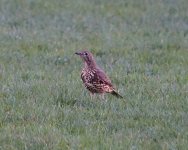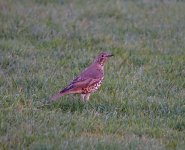You are welcome to join me on this eleventh of a series of articles taking a look back over my shoulder at some sightings that have not only delighted us but startled and surprised us.
Way back in the 1980s and 90s, we visited sites all over mainland Scotland before falling in love with the coast and islands in the west. Our favourite of these mainland areas was definitely the Cairngorms, a massif of mountains in the north-east and having a wonderful mix of Caledonian pine forest, wide river valleys called straths and semi-arctic habitats on the hill tops.
Here we encountered Crested Tits and Crossbills for the first time, and found wonderful flowers such as Twinflower, Small White Orchid, Starry Saxifrage, Cloudberry and Dwarf Cornel. Just typing out that list brings back the memories and the scents and sounds of Cresties ‘churring’ at us, and the scents of old Scots Pine forests and the exquisite delicacy of Twinflowers.
Some of our fondest memories are of our wanderings up Strath Feshie, a long river valley carved up the western side of the Cairngorms with forests and heaths and views to the tops of the mountains, and especially the hill called Carn Ban Mor. I am not sure if the small road up the glen was private or not but we parked in the public car park on the east side of the glen near Achlean and walked from there, exploring the small woods nearby and then crossing over the bridge to walk along the dead-end road up the glen. There was no motor traffic and very few walkers so it was a fabulous treat to seemingly have this huge strath to ourselves.
Before our visits to Glen Feshie, we had already seen several Greenshanks on autumn passage at coastal sites in the east of England, so we had already fallen in love with these graceful wading birds, but of course these were all seen against the backdrop of autumn, so they were foraging in muddy places amongst dead vegetation. Seeing one on the bank of the River Feshie on a bright and warm day with summer vegetation around was an entirely different experience and one we have treasured ever since.
Not every day was as idyllic as this though and the one I have in mind, although starting with some promising blue sky, turned vicious in the afternoon, and as we trudged back down the glen, we were battered by squalls of strong wind propelling rain at armour-piercing velocities. Halfway down the glen, whipped and scourged by the storm, we came to a halt as we both heard snatches of bird-song in between the gusts of wind. Walking on a little further we were lucky that the wind briefly slowed down and we could identify the singer. This is when we learned why the Mistle Thrush was known in the dim and distant past as the Stormcock, because there he was, perched on the very topmost branch of a tall Birch tree that swayed madly to and fro in the wind and lashing rain. A male Mistle Thrush, singing his heart out, turning his head from side to side to send his message far and wide. We were simply stunned by this display of determination and courage, and over the decades since then, have been privileged to witness this many times.
As terrific as the sightings of Greenshank and Mistle Thrush were, they are over-shadowed by the must unlikely of coincidences that provided us with two sightings within minutes of each other that we would have laughed away as impossible, if someone had suggested their likelihood.
It was late in the day as we approached the point on the glen road where we should turn off and head for the bridge over the River Feshie. Looking up towards the path winding up the heights of Carn Ban Mor, we could see that the patch of snow near the top of the path was still there, although perhaps reduced in size, but our attention was taken by the sudden appearance of a Golden Eagle, that was clearly carrying prey. Sure enough, through my Dialyts I could see it was a large hare, although whether it was a Brown or Mountain Hare it was impossible to determine.
Wow. We had never seen an Eagle carrying prey before but before we could sit down and enjoy this unexpected spectacle, it drifted away over towards Carn Ban Mor’s summit. No sooner had we stopped chattering about it, and turned to head for the bridge, than we thought we could see the Eagle coming back. But no, the wings on this bird were all wrong for eagle, and soon we could see it was an Osprey, and it was carrying a large fish! Incredible! What next? A Peregrine carrying a Ptarmigan? But no, that was our final treat of the day, and looking back, even after all these years, I can’t believe our luck and I give a silent vote of thanks to the wonderful Glen Feshie.
Lee
Way back in the 1980s and 90s, we visited sites all over mainland Scotland before falling in love with the coast and islands in the west. Our favourite of these mainland areas was definitely the Cairngorms, a massif of mountains in the north-east and having a wonderful mix of Caledonian pine forest, wide river valleys called straths and semi-arctic habitats on the hill tops.
Here we encountered Crested Tits and Crossbills for the first time, and found wonderful flowers such as Twinflower, Small White Orchid, Starry Saxifrage, Cloudberry and Dwarf Cornel. Just typing out that list brings back the memories and the scents and sounds of Cresties ‘churring’ at us, and the scents of old Scots Pine forests and the exquisite delicacy of Twinflowers.
Some of our fondest memories are of our wanderings up Strath Feshie, a long river valley carved up the western side of the Cairngorms with forests and heaths and views to the tops of the mountains, and especially the hill called Carn Ban Mor. I am not sure if the small road up the glen was private or not but we parked in the public car park on the east side of the glen near Achlean and walked from there, exploring the small woods nearby and then crossing over the bridge to walk along the dead-end road up the glen. There was no motor traffic and very few walkers so it was a fabulous treat to seemingly have this huge strath to ourselves.
Before our visits to Glen Feshie, we had already seen several Greenshanks on autumn passage at coastal sites in the east of England, so we had already fallen in love with these graceful wading birds, but of course these were all seen against the backdrop of autumn, so they were foraging in muddy places amongst dead vegetation. Seeing one on the bank of the River Feshie on a bright and warm day with summer vegetation around was an entirely different experience and one we have treasured ever since.
Not every day was as idyllic as this though and the one I have in mind, although starting with some promising blue sky, turned vicious in the afternoon, and as we trudged back down the glen, we were battered by squalls of strong wind propelling rain at armour-piercing velocities. Halfway down the glen, whipped and scourged by the storm, we came to a halt as we both heard snatches of bird-song in between the gusts of wind. Walking on a little further we were lucky that the wind briefly slowed down and we could identify the singer. This is when we learned why the Mistle Thrush was known in the dim and distant past as the Stormcock, because there he was, perched on the very topmost branch of a tall Birch tree that swayed madly to and fro in the wind and lashing rain. A male Mistle Thrush, singing his heart out, turning his head from side to side to send his message far and wide. We were simply stunned by this display of determination and courage, and over the decades since then, have been privileged to witness this many times.
As terrific as the sightings of Greenshank and Mistle Thrush were, they are over-shadowed by the must unlikely of coincidences that provided us with two sightings within minutes of each other that we would have laughed away as impossible, if someone had suggested their likelihood.
It was late in the day as we approached the point on the glen road where we should turn off and head for the bridge over the River Feshie. Looking up towards the path winding up the heights of Carn Ban Mor, we could see that the patch of snow near the top of the path was still there, although perhaps reduced in size, but our attention was taken by the sudden appearance of a Golden Eagle, that was clearly carrying prey. Sure enough, through my Dialyts I could see it was a large hare, although whether it was a Brown or Mountain Hare it was impossible to determine.
Wow. We had never seen an Eagle carrying prey before but before we could sit down and enjoy this unexpected spectacle, it drifted away over towards Carn Ban Mor’s summit. No sooner had we stopped chattering about it, and turned to head for the bridge, than we thought we could see the Eagle coming back. But no, the wings on this bird were all wrong for eagle, and soon we could see it was an Osprey, and it was carrying a large fish! Incredible! What next? A Peregrine carrying a Ptarmigan? But no, that was our final treat of the day, and looking back, even after all these years, I can’t believe our luck and I give a silent vote of thanks to the wonderful Glen Feshie.
Lee







